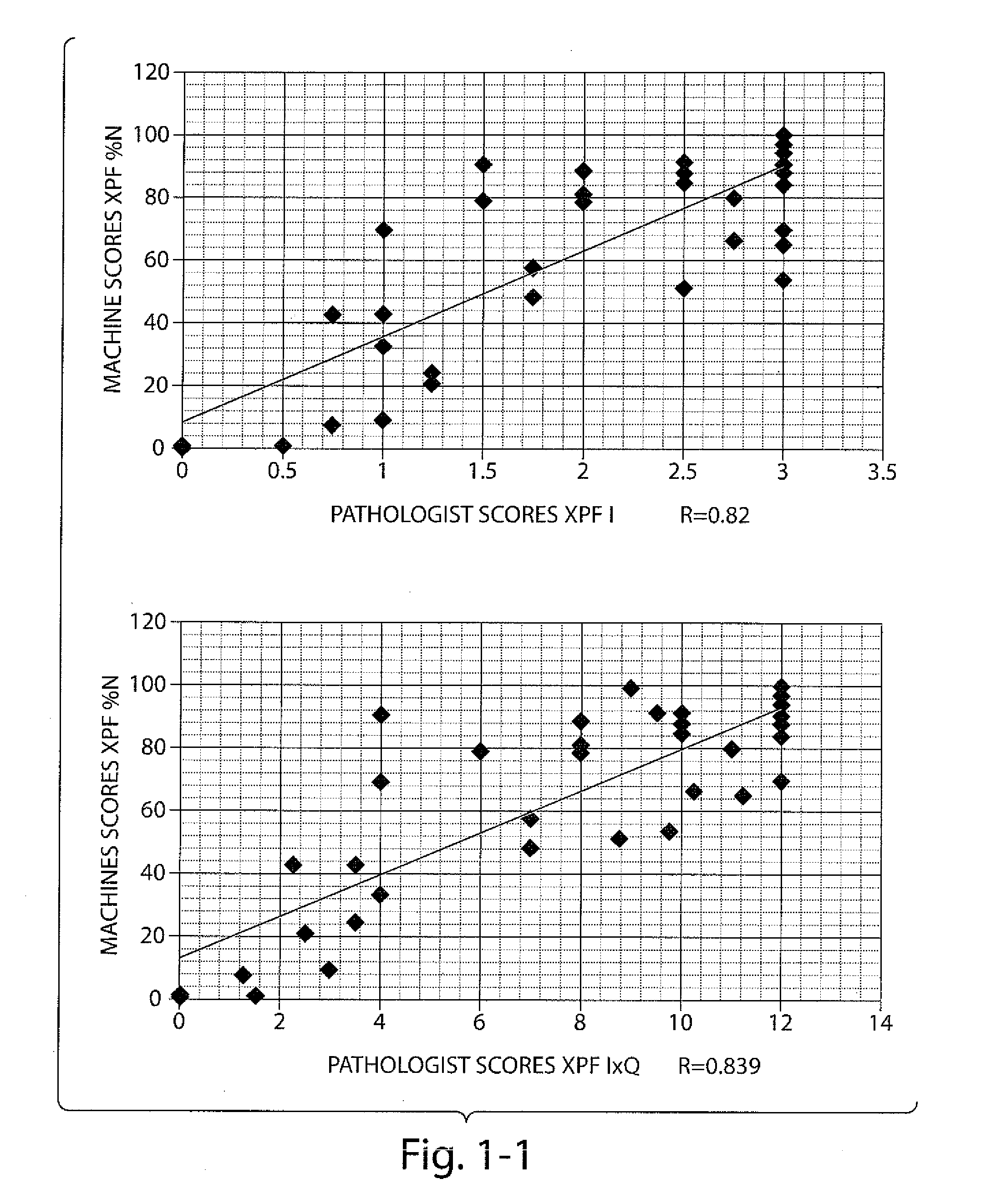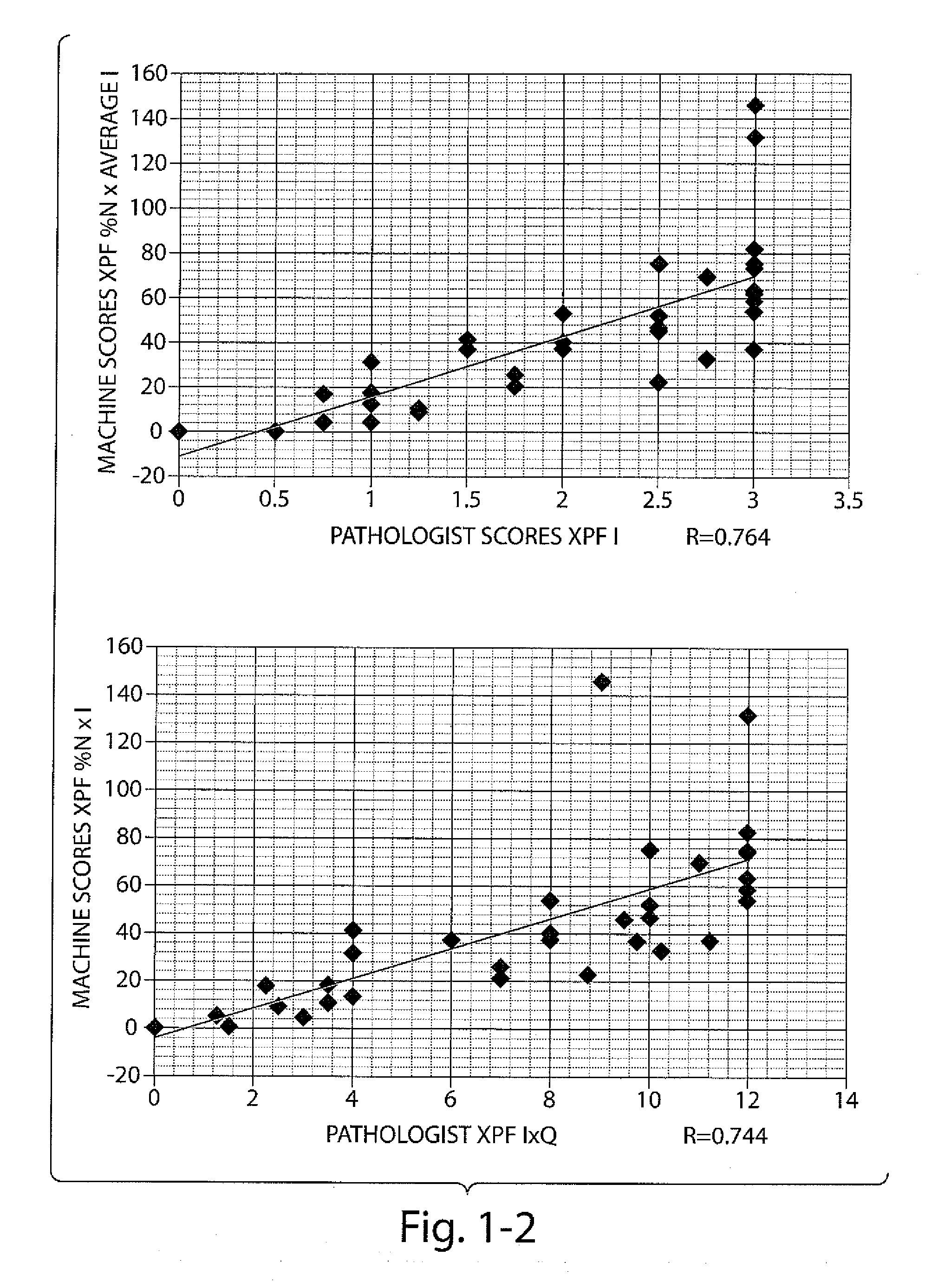Biomarkers for the Identification Monitoring and Treatment of Head and Neck Cancer
- Summary
- Abstract
- Description
- Claims
- Application Information
AI Technical Summary
Benefits of technology
Problems solved by technology
Method used
Image
Examples
example 1
General Methods of Evaluating Head and Neck Cancer Patients with Biomarkers
Patient Cohorts
A. Induction Chemotherapy
[0188]Squamous cell carcinomas of the head and neck are highly responsive to induction chemotherapy. Head and neck cancer patients with stage III and IV locoregionally advanced HNSCC received carboplatin / taxane (C+T) induction chemotherapy followed by FHX based chemoradiotherapy [(paclitaxel, 5-Fluorouracil, hydroxyurea)] according to the approved protocols from a collaborating cancer center. However, chemotherapy is toxic to patients and it is preferred to understand the benefit of the treatment by an evaluation of molecular biomarkers of the tumor cells prior to treatment.
[0189]Response evaluation was performed after induction chemotherapy. Response criteria were based on two dimensional tumor measurements. Complete response (CR) was defined as complete disappearance of all detectable disease. Attempts to document complete remission by biopsy or surgery of previously ...
example 2
HNCMARKERS that have Utility in Discriminating Benefit from Concurrent Chemoradiotherapy
[0203]Sixty-six HNC patients with stage III and IV locoregionally advanced HNSCC received TFHX-based concurrent chemoradiotherapy according to the approved protocols at the collaborating cancer center. The patient biopsies had been obtained from a primary excision or recurrent biopsy and three Tissue Microarrays (TMAs) were constructed and applied in immunohistochemistry biomarker development. Time to progression was measured as the time from the first day of therapy until death of disease, appearance of new lesions, or a greater than 25% increase of the indicator lesion over the previous smallest size. Survival was measured from the date of entry onto the study until death of any cause. Disease-free survival (DFS), and overall survival (OS) and Disease-Specific Survival (DSS) were calculated from the date of initial diagnosis. DFS was defined as the time between tissue acquisition and evidence o...
example 3
Association of HNCMARKERS by Partition Analysis with Separation of Head and Neck Cancer Patient Survival Groups Following Concurrent Chemoradiotherapy
[0205]Eleven HNCMARKERS were analyzed from biopsy material for their ability to predict the likelihood of survival following the concurrent chemoradiotherapy (Table 1). Each HNCMARKER were then evaluated for the separation between death and disease-free / overall survival groups. Univariate Cox proportional hazards models were constructed for each of the markers (single marker models) to examine their potential predictive powers. High XPF (p=0.00422), FANCD2 (p=0.00199), RAD51 (p=0.0359), and BRCA1 (p=0.0101) were associated with better survival on univariate partition analysis (Table 2). Kaplan-Meier survival curves also show that high XPF, FANCD2, BRCA1, RAD51, ATM were associated with better survival outcome, which consistent with univariate partition analysis (FIG. 3). For several other markers in DNA repair such as pMK2 and pH2AX, E...
PUM
| Property | Measurement | Unit |
|---|---|---|
| Fraction | aaaaa | aaaaa |
| Time | aaaaa | aaaaa |
| Angle | aaaaa | aaaaa |
Abstract
Description
Claims
Application Information
 Login to View More
Login to View More - R&D
- Intellectual Property
- Life Sciences
- Materials
- Tech Scout
- Unparalleled Data Quality
- Higher Quality Content
- 60% Fewer Hallucinations
Browse by: Latest US Patents, China's latest patents, Technical Efficacy Thesaurus, Application Domain, Technology Topic, Popular Technical Reports.
© 2025 PatSnap. All rights reserved.Legal|Privacy policy|Modern Slavery Act Transparency Statement|Sitemap|About US| Contact US: help@patsnap.com



